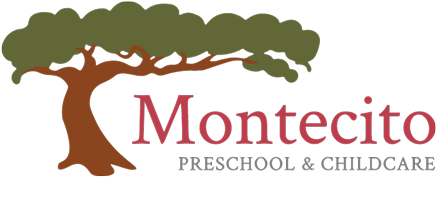The Promise and Perils of Transitional Kindergarten: What Parents Need to Know
There is tremendous joy and activity in learning with a group of Pre-Kindergarten
children (children not yet 5 by Sept. 1st). They explode with moments of discovery and delight as they create learning while exploring. In my 40 years of working with young children I continue to be astounded by them. John Dewey said, “Every great advance in science has issued from a new audacity of imagination.” These children are spark plugs of audacity and helping them maintain their curiosity and eagerness to learn is the job of early childhood teachers. Recently I was coaching teachers at Montecito School in Los Altos. In the sand box children stirred water into sand, collected “pepper berries” from the ground and mixed those in as well. One child was collecting “pepper berries” from under the tree in his cup and pouring them into a dump truck. He turned to me saying, “I have so many pepper berries!” I looked with astonishment at the pile of “berries” and asked him, “How many do you have?” He looked down at the pile in the bed of the dump truck and looked back at me, alight with questioning eyes. “Shall we count them together?” He counted up to 13 with me repeating
close behind. After 13 he jumped to 20. I spoke a little clearer saying 14 and waiting. He looked to my eyes and smiled. We counted together from there to 48. His voice was clear and sharp with excitement as he moved one “berry” from the truck to a bucket with each number spoken. As he shouted the last number, he stood up. As he ran towards the trees, he called over his shoulder, “How many more can I get?” While I was having this interaction another teacher was sitting at an art table with children who were making maps. A third teacher was reading books with a small group and yet a fourth teacher was talking with a parent. With low ratios of one teacher for every four children at Montecito School they excel at individualizing their instruction to meet each child’s needs. This is true of other community programs that have helped prepare children for entry into elementary education for many decades.
As California expands public school expanding Transitional Kindergarten (TK) to include three- and four-year-olds, there is great risk for our youngest children. These TK programs are modeled after Kindergarten and elementary education settings. Elementary Education is focused on group learning and often misses the needs of individual younger children. Developmentally very young children also learn differently than their older peers. Maria Montessori said, “Play is the work of the child.” Children who are three or four years old build foundations for later school success as they explore and build knowledge through concrete experiences with carefully selected materials and supportive interactions with teachers, which happen best in a quality preschool program.
The mandated group sizes for Transitional Kindergarten are 24 children to a group with one teacher and one aide for each group. Many counties are struggling to find qualified staff for the large numbers of young children who are enrolling in TK. In an article in EdSource in May 2024, Staffing Shortages Undermine Transitional Kindergarten Rollout, they state, “Some districts are not staffing TK classrooms with enough adults to maintain the required 1:12 staffstudent ratio, a problem that educators say puts the 4-year-old pupils at risk, hampers learning and violates state legislation.”
In the article, the author quoted a TK teacher, David Hunter of Fresno Unified, who has taught TK for the last six years of a 17-year career, “If you’re one adult and you’re managing so many children that have never been to school before, there isn’t any teaching going on. You’re just keeping them safe as best as you can, but you’re not actually able to teach.”
The strain of elementary education structure plus high ratios and sending young preschool age children under age five to TK/elementary settings impedes teachers’ ability to meet individual children’s developmental and educational needs. Many classrooms are enrolled beyond 24 children and sometimes without aides leading to ratios that may be even higher than one teacher for every 12 children. High ratios make it incredibly challenging to individualize children’s education in the way that is developmentally appropriate for this age group. Scaffolding children’s individual learning in developmentally appropriate ways while also meeting their basic needs requires an exploration play-based setting with low ratios.
Jean Piaget said, “Play is the work of childhood.” If our youngest children lose their ability to explore, discover, and create a foundation of knowledge that is cemented in their love of learning, then many may struggle as they move into more structured education. Classrooms must have the staffing necessary to individualize support while recognizing their unique needs using age-appropriate teaching strategies. It is incredibly challenging to implement ageappropriate teaching strategies if preschool age children are attending elementary school TK . Additionally, age-appropriate teaching strategies for preschool age children happen in the context of play-based exploration in a quality preschool environment. Research shows that experiences in these quality exploration-based programs prepares children for the most success in later life.
– Mary Ashley Latta
